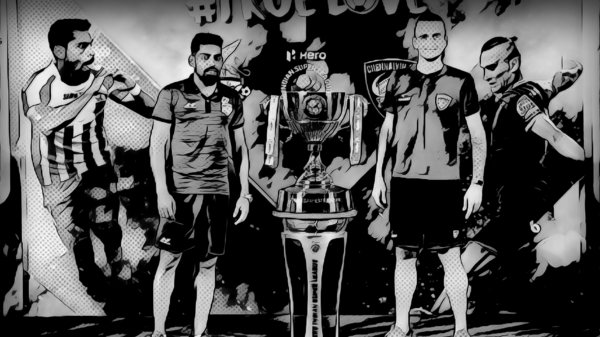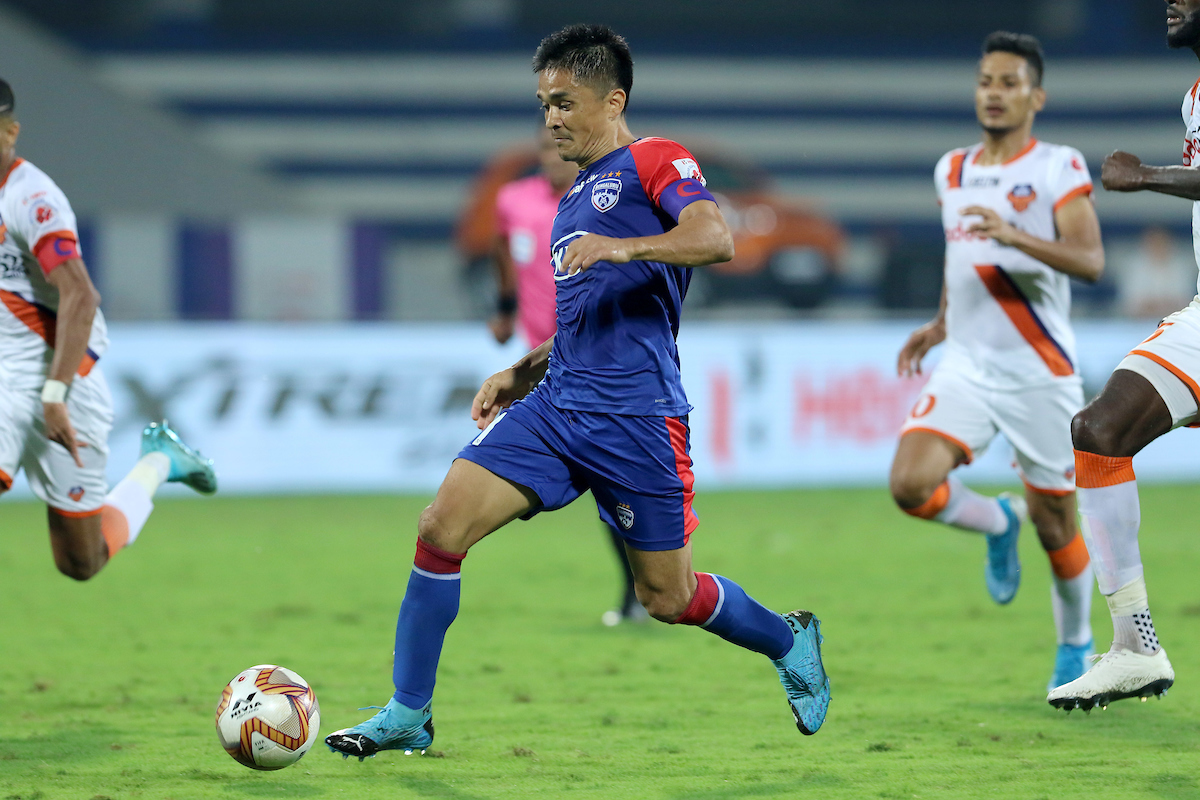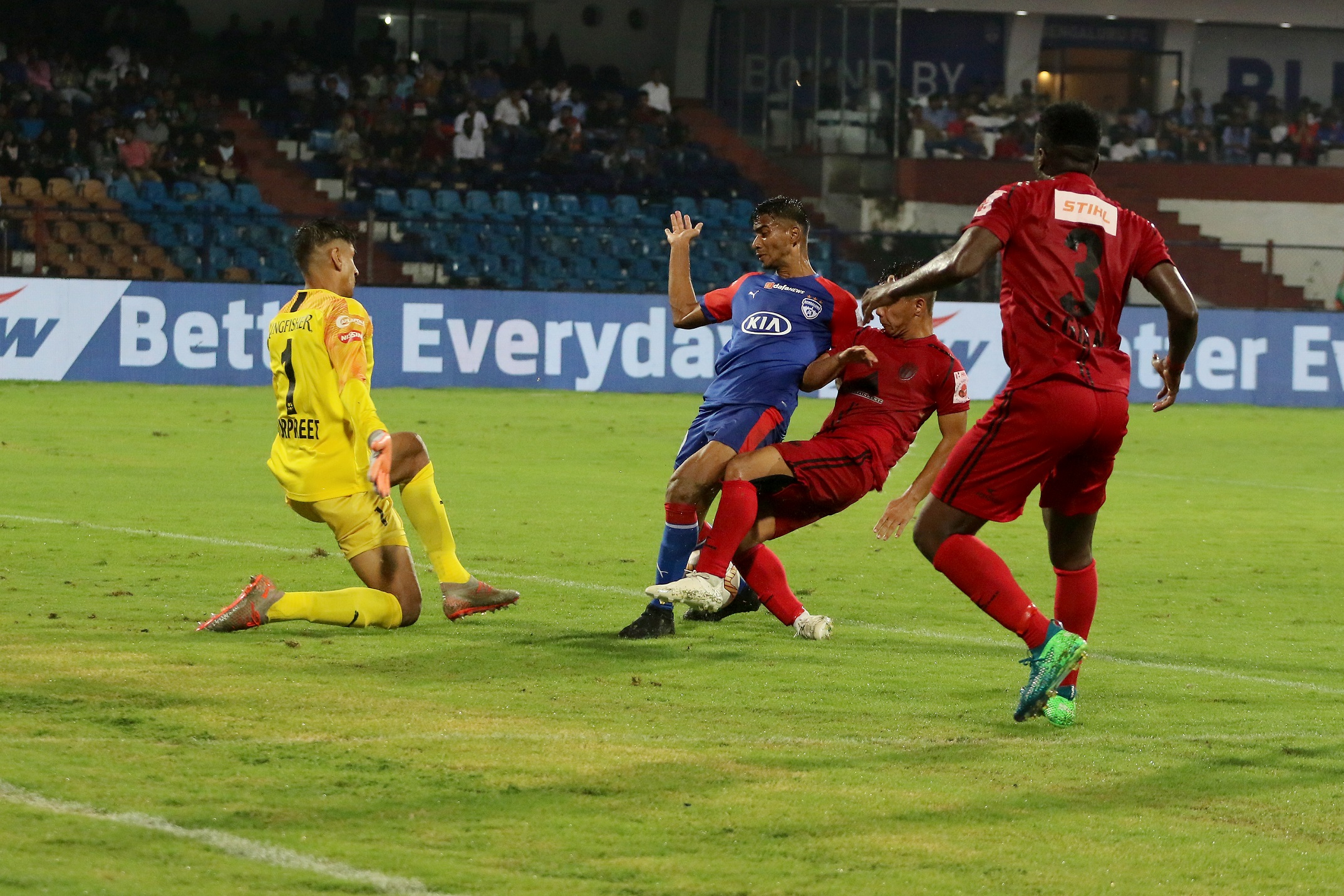Sidharth Choudhary has a look at the current state of Indian football and what must be done to return a semblance of normalcy to the chaos.
Indian football is in chaos. While some believe that it is rapidly disintegrating, others opine that it stands on the cusp of great change. But whatever the narrative, everybody agrees that football in India needs immediate reform. This has already been set in motion by the All India Football Federation, the game’s custodian in the country and their commercial partner Football Sports Development Limited (joint collaboration of IMG and Reliance). Recently, they unveiled a restructuring roadmap at a closed door meeting attended by various stakeholders. While the deliberations that transpired are hazy, some details of the proposed plan including formulation of a 3-tiered league system with the Indian Super League (owned by FSDL) at its pinnacle have come out. While the lay fan is excited by these developments, these have not been as well received by other stakeholders, especially I-League teams, the current top flight which will constitute the second division in the proposed league structure. This is particularly hard for them to swallow as the ISL will be a closed league with no relegation/promotion mechanism. A few I-League teams, the exact number being undecided, will get a chance to bid for a place in the ISL as part of the ‘merger’ proceedings. This restructuring of Indian football is imminent and perhaps necessary but it is important to examine whether the form proposed is adequate.
The popularity or lack thereof of the I-League is cited as a major reason for the emergence of the ISL and the need for restructuring. It is important to remember that the I-League was the result of a similar exercise about 10 years back in 2007 when the National Football League was revamped to make the sport more professional, attract fans as well as sponsorship and expand grassroots. It is apparent that this experiment failed. This failure can be attributed to multiple factors such as low quality of play, little fan engagement exacerbated by poor planning and non-existent marketing by the league. It is important to note that this league has been run by the AIFF and not a consortium of participating clubs. Thereby the blame for this rot must lie with them and not individual clubs alone as is being reported. While this does not absolve the clubs of their failures with regard to infrastructure development, fan engagement and establishment of grassroots programs, it does highlight the inability of the AIFF in setting up an incentive structure to meet these goals.
This problem persists with the new roadmap. It fails to elaborate on any sort of youth or infrastructure development plan or even broad expectations from the clubs in this regard, both of which are critical for shaping a bright future for football in the country. The I-League experiment is an abject example of the pitfalls of cosmetic changes only. However, these lessons seem to have been lost on the AIFF.
People will argue that the ISL is fundamentally different from the I-League and destined for success because of higher investments, glitzy marketing, marquee players and much greater fan engagement as seen from the popularity of the last 3 editions. The role model for the ISL is America’s Major League Soccer (MLS) and other letter leagues running in India such as the IPL (cricket’s Indian Premier League), PKL (Pro Kabbadi League), HIL (Hockey India League), PWL (Pro Wrestling League) among others. However, the business model of the ISL is significantly different from the MLS or IPL, casting a shadow on the long term feasibility of the league. This is because of the unique (in football) ownership structure of the league where apart from Football Sports Development Limited, the other major stakeholder is TV broadcaster Star Sports. While this guarantees coverage of the entire tournament unlike the I-League where the official broadcaster Ten Sports regularly skips matches, in the long run it deprives the league of money from broadcast rights which forms a major chunk of revenue for leagues worldwide including the MLS. The other aspect is its “closed” structure as opposed to the “open” structure where lower ranked teams get relegated to the lower league and vice versa. This is significant because a massive country like India cannot be represented adequately by the same 8 or even 11 teams as is being proposed. This is both in terms of geography as well as demographics. This is one of the few areas where the I-League has a distinct edge over the ISL. A small club like Aizawl FC from Mizoram which features in the I-League, has no hope of ever featuring in the ISL even though the popularity of football in Mizoram far surpasses other places in India. In practice, this proposed structure will stifle the ambitions of countless such clubs and players who dream to play in the top flight. This will be a massive disincentive for the growth of football in the country.
Another important factor is the league’s administration. As has been seen in the past, the AIFF lacks the acumen and the resources to run a professional league in the country. In fact, it is not unrealistic to believe that while the ISL will be run professionally by FSDL and Star Sports, the AIFF will once again mismanage and fail to successfully administer the other 2 divisions—League 1 and League 2 comprising the 2nd and 3rd division clubs. This will only exacerbate the problems of lack of opportunities and ambition for smaller clubs already impacted by the trump of financial power over ‘merit’. Moreover, such a scenario of lopsided success in the league structure will only inhibit the organic spread of football in the country.
Ownership of the country’s top league by a private operator throws a philosophical question as well, what will happen if the masses don’t take to the sport as expected or the business environment is not suitable anymore to running the league? For all its faults, the I-League and the NFL before it, have kept football alive in the country despite low interest and competition from foreign behemoths such as the Premier League and La Liga. Will the ISL similarly persist through thick and thin? Only time will tell.
The current state of Indian football is directly attributable to the All India Football Federation. This fact seems to have been missed entirely by the public discourse. While we can discuss the merits or problems of the ISL/ I-League all day but the issue is not only of the restructuring of the league system but also of reforms in the AIFF itself. This has not been addressed at all in public discussions or stakeholder meetings. The roadmap should not be allowed to shroud the poor functioning of the AIFF. In fact, it is pertinent to note that this is not even the 1st roadmap developed; a similar document with no measurable objectives was created way back in 2012. The ‘master plan’ Lakshya 2022, which listed steps needed to qualify for the 2022 World Cup, has been quietly brushed aside with no mention or discussion around it. This raises the question of accountability, how do we determine if any initiative is working? There exists no mechanism for auditing schemes, thus perpetuating a cycle of poor implementation that ultimately results in rebooting of the entire system once every ten years. This ad-hoc functioning does more harm than good to Indian football.
This situation is compounded by the opaque operation of the AIFF and its functionaries. Even though the AIFF claims that it has implemented the Right to Information Act 2005, key documents remain outside of its purview such as the partnership agreement between the AIFF and FSDL, which as we are now observing will have a major impact on Indian football. Further, details of important meetings between various stakeholders including the deliberations on implementation of the new roadmap and in fact, the roadmap itself remain a mystery. This is not helped by various conflicts of interest existing in the organisation. Recently 2 I-League clubs from Goa (Salgaocar FC and Sporting Clube de Goa) pulled out of this year’s I-League (raising the number of withdrawals to 5 clubs in 2 seasons) in protest against the likely unilateral imposition of the roadmap. Mr. Srinivas Dempo, owner of Goa’s Dempo SC, indicated support for such a move initially. However, by the next day, he had assumed his other role as a Vice-President of the AIFF to sit down with the clubs to ask them to reconsider. Also, at the time he just happened to be a co-owner of the Goa franchise of the ISL as well. His is one case; such relationships are rife in the AIFF.
Another example of the lack of transparency which has become the cause for much chagrin now is the nature in which the ISL was introduced in India. It is on record that the AIFF initially described it as a ‘tournament’ to popularise the sport in India which would never displace the FIFA sanctioned I-League, then the talk shifted to a ‘merger’ and now as the situation stands, it is set to become the unrivalled premier football competition in the country. These instances hint towards a less than honest functioning of the organisation which some former players describe as the organisation having sold Indian football to a corporation. Hopefully this is just hyperbole and not a prophetic statement.
It is clear that the greatest impediment to the growth and prosperity of football is the lack of vision and leadership from the AIFF. But the planned restructuring has the potential to transform the sport only if is executed in the best interests of all stakeholders. Further, any roadmap put forth should clearly articulate the goals, objectives and responsibilities for each participant and must include a mechanism to measure, correct and extend them over time. Moreover, it is essential that the AIFF eschew its opaque functioning and allow all football fans in the country an opportunity to aid in the moulding the future of this sport in India. Anything less will not be acceptable.
- Indian Football: Disintegrating or on the Cusp of Great Change? - January 31, 2017


























































